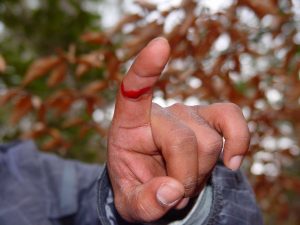 In Commonwealth v. Fielding, the Appeals Court affirmed the defendant’s conviction of open and gross lewdness. In its decision, the Court ruled that the judge properly declined to suppress: (1) the victim’s identification of a Facebook photo as depicting the man who had masturbated in front of her the day before; and (2) the victim’s in-court identification of the defendant at the trial.
In Commonwealth v. Fielding, the Appeals Court affirmed the defendant’s conviction of open and gross lewdness. In its decision, the Court ruled that the judge properly declined to suppress: (1) the victim’s identification of a Facebook photo as depicting the man who had masturbated in front of her the day before; and (2) the victim’s in-court identification of the defendant at the trial.
The background was as follows. “[T]he victim was swimming laps [in a] health club’s pool. A man whom she had not before met appeared at the shallow end of the pool and began talking to her. The victim continued her workout but would pause to converse with him in between her laps. The man introduced himself to the victim as “‘Scott’ [the defendant’s given name] and the two interacted in the pool for approximately fifteen minutes. After the victim completed her swimming, she and the man … went into the hot tub, where they sat close to each other and chatted some more. They then each expressed an interest in going into the sauna…. [There] the two conversed some more, bringing their total interaction to about thirty minutes long.” Several minutes later, “the victim heard a ‘scratching’ sound from where [“Scott”] was sitting, and as she got up to leave the sauna, he asked her, ‘[D]o you want to look?’ She turned and observed the man stroking his genitalia, which shocked and angered her.” The following day, the victim reported the incident to the police. She also “returned to the health club for a yoga class, where she told her instructor” about the incident, including a description of the offender. “[T]he yoga instructor [said] that she thought she knew him because [a man of similar description] had approached her and her daughter.” Then, on the club’s computer, the yoga instructor located a photograph of the man she was thinking of” on Facebook. “She showed that photograph to the victim, who identified the man depicted there” as the offender. Nine months after the incident, the victim selected from a photographic array an image of the defendant as depicting the offender. After the issuance of a complaint charging the defendant with open and gross lewdness, “the defendant filed a motion to suppress the photograph that the yoga instructor had found on Facebook … and any in-court identification.” The judge denied the motion. “During the trial, the Facebook photo[,] scrubbed of any text or other potential indicator of its provenance[,] … [was] admitted over the defendant’s objection…. The victim also was allowed to identify the defendant as the perpetrator in court, again over the defendant’s objection.” The defendant was convicted. On appeal, he challenged the denial of his motion to suppress. Continue reading →
 Massachusetts Criminal Lawyer Blog
Massachusetts Criminal Lawyer Blog









